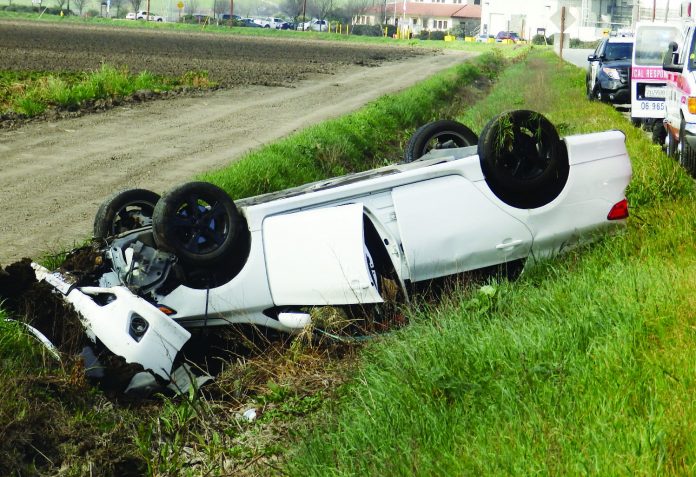Hollister’s $5 million fire department budget supported by an add-on 1 percent Measure E sales tax should include putting out non-negligent fires and handling non-negligent traffic accidents at no costs to residents; that’s what the fire department is budgeted for and the employees paid to do. Unfortunately, the never-ending grasp for more public monies has convinced a majority of the council that they can strong-arm the taxpayers for expensive fees just to get the staff and equipment out of their multimillion-dollar firehouses and actually come douse a fire or pry you out of a wreck. When they come, you should be prepared to pay through the nose—either directly or indirectly.
They call it “mitigation for actual cost that are usual, customary and reasonable (UCR) for services provided by the Hollister Fire Department in emergency and nonemergency incidents.” It’s really a greedy money grab to cover the mismanagement of the department’s budget.
The Hollister council in a 3-2 vote Tuesday (Victor Gomez and Karson Klauer voting no) approved this plan under false colors and biased claims. Mayor Ignacio Velazquez continually emphasized that these charges only applied to cases of negligence; he even gave examples of people storing explosives in their homes and cars doing high-speed donuts in neighborhoods. However, the mayor’s characterization was inaccurate; according to the new ordinance, these charges apply to all fires and all traffic accidents requiring a fire department response. The words “negligent,” “neglect,” similar descriptions or caveats, do not appear anywhere in the ordinance. In fact, it says just the opposite.
So a speeding car cuts you off, runs you off the road and keeps going. You’ll be billed $435 for stabilizing the scene, $495 for cleaning up any leaking fluids, $605 for the firefighters to protect themselves, $1,800 to pry you out, and $2,200 to put you on the Medevac. The flight is extra, as always. Oh, if the equipment has to stay on scene, that’s another $400 per hour for each engine, $500 per hour per truck, and $300 per hour for other equipment. Let’s assume an hour each, not unrealistic, and you’re out $6,735.
What did you do wrong? Well, for one thing you required a response from the Hollister Fire Department, that’s what. According to the council majority, the insurance companies would be more than happy to pay this without raising your rates because they have money just sitting around for this purpose; at least that’s what the company that promotes this system and receives a hefty cut of these fees says. Since when do we take the seller’s word as gospel? My insurance company doesn’t cover more than an extra $500 for a house fire and my bet is that most insurance companies will say something similar; if they do pay they will be making it back with higher rates. If they don’t pay and you don’t pay you will be subject to the typical government coercion—“If the invoice is not paid within 90 days, a late charge of 10 percent of the invoice, as well as 1.5 percent per month, as well as the actual cost of the collections, will be accessed to the responsible party(s).”
Similar enormous rates are to be charged for Fires, Water Incidents, Back Country Rescue, and Hazardous Materials (HAZMAT) rates which are a lot higher.
False alarms are one free of charge within 12 months in a calendar year, the second is $100 increasing up to $300 per event not to exceed $500 per calendar year. Yes, false alarms are a problem, but that’s too expensive.
In any case the city should not be charging $250 an hour, or anything for that matter, for a chief response—the set-up of command, and providing direction of the incident including operations, safety, and administration of the incident. I’m old-fashioned; I always thought that the chief got paid to run things and the firefighters and rescue personal were paid to fight fires and perform rescues. Little did I know these basic protection functions are now classified as custom services.
Marty Richman lives in Hollister.










